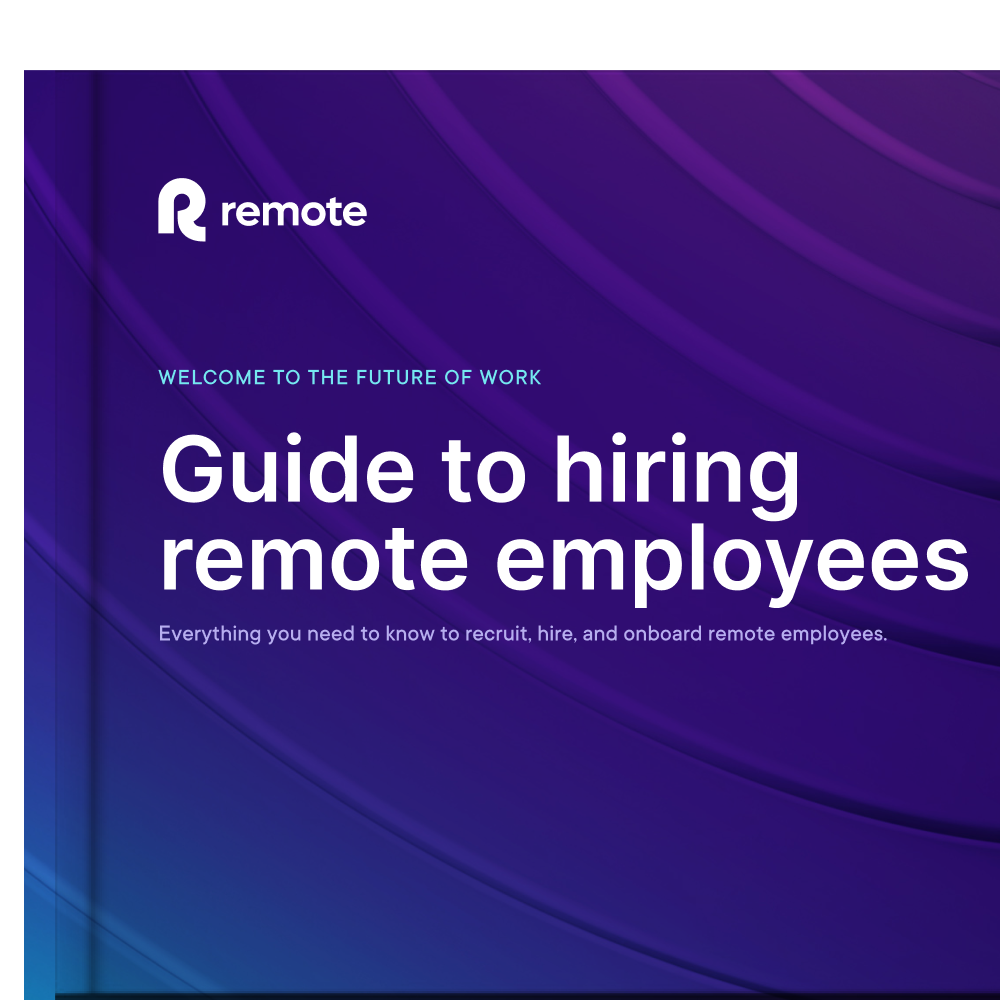
Denmark — 9 min

Remote & Async Work — 11 min
Onboarding a remote employee is drastically different to onboarding an in-office one.
With mountains of paperwork to sort through, different types of software to set up, and multiple training modules to create, it can be easy to overlook critical steps. And with the onboarding phase so crucial to a positive working relationship, this can be potentially costly.
That’s why it’s so helpful to have a remote employee onboarding checklist. With all the key tasks and information outlined, all you need to do is follow the template each time, with minor tweaks as required.
In this article, we’ve provided a free checklist, along with some handy tips for streamlining your onboarding process.
So let’s begin.
Before we dive into the checklist, it’s important to first understand what makes remote onboarding different — and which mistakes you should avoid.
Both approaches have the same overall objectives: ensure your hire understands key company policies, becomes integrated into their team, and knows their job responsibilities. However, remote work presents unique challenges, especially in terms of interaction and socialization, which can make it more difficult for your employee to achieve these goals.
Here are a few of these challenges:
In physical work spaces, technical issues can often be quickly resolved; simply send your new team member to the IT helpdesk on the third floor. However, for remote work companies with asynchronous schedules, such problems can lead to significant delays and frustration — for both parties.
It’s essential that you not only equip your new hires with the necessary hardware, software, and access, but do so well in advance of their first day. This ensures that if something does go wrong, there’s time to sort it before your employee is on the clock.
In physical offices, managers are easily able to facilitate social interactions by introducing new hires to their colleagues, encouraging casual “water cooler” conversations, or even setting up out-of-hours social events.
Remote onboarding requires a more deliberate and strategic approach. You should establish communication channels for new employees to interact with their colleagues, including video calls and Slack groups, and set up informal one-to-one “coffee” chats.
If you’re onboarding employees in different countries, you need to account for additional nuances such as time zone differences, local employment laws, and cultural observations.
Before the employee’s first day, consider how you’re going to manage such differences, and consult with a local employment expert to ensure everything is above board. Speak directly with the new hire, if necessary, to agree on an approach that works for both of you.
To learn more about bridging the differences between remote and in-office onboarding experiences, check out some of these expert tips:

According to research by the Work Institute, 37% of turnover occurs in the first 90 days of employment. In most cases, this is due to a poor onboarding experience.
Without a structured, well-supported onboarding process, employees may feel all at sea in their new role — causing top talent to question their decision, and potentially look elsewhere.
This is why a checklist is crucial. To help you get started, here’s the tried and tested template that we follow at Remote:
Start by creating a 90-day roadmap that outlines the objectives, milestones, and key activities you’ll need to cover during the remote onboarding process.
You can be flexible with this, of course; you may want to reduce the timeline, or even extend it, depending on the role.
Your roadmap might be structured in the following way:
Week 1: orientation, company overview, and initial training
Weeks 2–4: deep dive into job-specific training, virtual “shadowing,” and goal setting
Weeks 5–8: ongoing company-wide training, regular check-ins, and performance feedback discussions
Weeks 9–12: increased autonomy, more involvement in team projects, and in-depth career development discussions
This is a general example, but you should work with the relevant team manager and aim to tailor the roadmap to the employee’s role as closely as possible. Recent studies have shown that highly personalized mentoring and onboarding programs can help reduce role ambiguity, thereby increasing the likelihood that your employee will stick around long-term.
A welcome kit is a collection of materials that provides useful information and resources for your new team member. It can be distributed physically or digitally, depending on what you want to include.
Either way, your employee should receive it before their first day of work, allowing them enough time to review the material and resolve any questions or issues.
Consider including the following in the kit:
Welcome letter from the CEO
Company information booklet providing a key overview of the company’s history, mission, values, and organizational structure
Instructions for the employee’s first day, including timings
Employee handbook containing key processes, policies, and points of contact
Access details including logins and passwords (ensure that this is provided securely)
You might also want to include some branded swag or presents to make your hire feel like part of the team, such as laptop stickers or a coffee mug.
You should clarify, either in the welcome pack or separately, how communication works at your company — especially if the hire has never worked remotely or asynchronously before.
Explain which channels you use (Slack, Microsoft Teams, Google Suite etc.) and for what purpose, and provide instructions on how to use them if necessary (i.e., links to user guides). Include guidance on role-specific communication tools, too, such as Jira.
If relevant, explain your company’s centralized workspace, and how employees can access documents and schedules via project management software.
It’s also a good idea to provide contact information for your HR personnel to ensure privacy and support for private matters such as payroll.
To streamline the learning process, consider recording communication training videos that break down the hierarchy of communication, and provide clear instructions for accessing necessary tools and contacting relevant personnel.
Although you will have covered what your employee’s first day and week will look like in your 90-day plan, pay particular attention to that first day. The last thing you want is for your employee to be unsure of what they’re supposed to be doing.
When they log on, they should know what to read, where to read it, what to complete, and who to speak to. It’s a good idea to set up a video call (at a time that is convenient for your employee), just to check in and ensure that they have their bearings.
You should also assign a designated “buddy” who can act as a point of contact for simple questions. Ideally this buddy should be in the same time zone as your hire, especially if their manager is in a different time zone.
Learn the processes you need to find, recruit, and onboard remote employees (and stay compliant while you're at it).

Once your employee is more familiar with their surroundings (after a few days, at least), you should set up a virtual team meeting to introduce them.
You can ask your hire to do a personal share, or set up ice-breaker activities such as ‘show and tell’, or ‘spot the lie’.
Don’t just put them in the spotlight, though. Ask all your team members to introduce themselves, discuss team communication methods, and build a strong and supportive remote work culture from day one.
As the employee begins to bed in, arrange some role-relevant training sessions. These should provide an understanding of your company’s products and services, especially if the employee is in a customer-facing role.
In some cases, this might be an informal overview of the key features of the product, and last no more than an hour or two. However, if it’s important to have in-depth product knowledge, this could be training conducted over several weeks (or longer) by a specialist, with formal assessments and even consequences for failing.
If you operate in a niche or highly-regulated industry, you may also want to conduct some training sessions to help provide context for your hire.
To stay on schedule with your 90-day employee onboarding roadmap, it’s important to continuously check in with your new employee.
Design structured worksheets that guide the flow and content of your check-in meetings, ensuring that essential topics are addressed and discussions stay focused. For instance, include sections for goal review and individual development planning.
It’s also a good idea to set aside time in each meeting for your employee to offer their feedback, and to express any concerns they may have.
Here are some things you should try to avoid when onboarding remotely:
Many companies make the mistake of using email as their only tool for communication, due to its familiarity and convenience.
However, relying solely on email in a remote work setting — where face-to-face contact is already limited — can create numerous challenges, such as misinterpretation of messages, delayed responses, or feelings of isolation among team members.
While written communications can often mitigate the need for video calls and meetings, this doesn’t mean that you should avoid them entirely. Even one 30-minute call to talk about sport, culture, or food can make the world of difference to how a remote employee is feeling about their work.
Ensure that you make real-time interaction — work-related or otherwise — a part of your onboarding process, and maintain that face-to-face contact consistently.
Another common mistake — and one that is relevant to all kinds of onboarding — is a failure to set clear expectations for new employees.
Establishing specific and time-bound goals for each employee can improve employee engagement and performance, while the absence of personalized and clear expectations can negatively impact their morale and productivity.
Without guidance, your employees may feel directionless in the short-term, and undervalued in the long-term. To mitigate this, you should conduct regular check-ins during your hire’s first 90 days, and observe the following:
How well the new hire is communicating with their team
The level of engagement and enthusiasm they are showing towards their work and the company as a whole
Any recurring obstacles the new hire is facing
This checklist is designed to help you stay on track, and to ensure that every employee receives fair and consistent treatment. It helps to foster a sense of community and belonging within your remote team, right from the very start of the work journey.
However, remote onboarding involves a lot of moving parts — and it’s a lot easier when you have an expert in your corner.
With Remote, you can easily hire talent anywhere in the world, and we will onboard them for you — quickly and compliantly. We take care of all the paperwork, all the calculations, and all the heavy legal lifting, allowing you to focus on the steps in this article.
"With Remote, onboarding is smooth and all our people's questions are answered quickly. That contributes to retention which is crucial, because we know that the success or failure of the company is 99% down to our people."
- Antonio Arias, Chief People Officer at QuoIntelligence
We also handle payroll, benefits, and day-to-day HR administration, ensuring that beyond onboarding, your employee stays happy and engaged.
To learn more about how we can simplify the entire employee lifecycle, speak to one of our friendly experts today.
Create an account with G2's top-ranked multi-country payroll software and start onboarding your first employees in minutes.

Subscribe to receive the latest
Remote blog posts and updates in your inbox.